As Larry Coon explains in his invaluable CBA FAQ, the term “base year compensation” technically no longer shows up in the NBA’s Collective Bargaining Agreement, and hasn’t since 2011. A relic of past agreements, the base year compensation rule was intended to prevent teams from signing free agents to new contracts that were specifically intended to facilitate salary-matching in trades.
While the base year compensation rules have mostly been adjusted and/or removed from the CBA in recent years, there’s still one situation where they apply. Teams have to take them into account when completing sign-and-trade deals.
The BYC rules apply to a player who meets all of the following criteria in a sign-and-trade:
- He is a Bird or Early Bird free agent.
- His new salary is worth more than the minimum.
- He receives a raise greater than 20%.
- His team is at or above the cap immediately after the signing.
If the player meets those criteria and is included in a sign-and-trade deal, his outgoing salary for matching purposes is considered to be his previous salary or 50% of his new salary, whichever is greater. For the team he is being signed-and-traded to, his incoming figure for matching purposes is his full new salary.
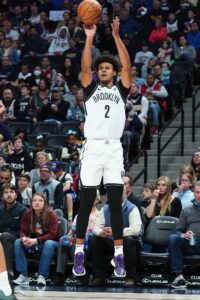 Here are a couple specific examples to help make things a little clearer:
Here are a couple specific examples to help make things a little clearer:
Let’s say the Nets want to sign-and-trade Cameron Johnson this offseason. He’s a Bird free agent, his new salary will be well above the minimum, and Brooklyn projects to be an over-the-cap team. Having made $5,887,899 in 2018/19, Johnson figures to receive a raise significantly higher than 20% — his next deal could easily start at or above $20MM. So he meets the BYC criteria.
In a scenario where he signs a deal with a $22MM starting salary as part of a sign-and-trade, Johnson’s salary for matching purposes from the Nets’ perspective would be $11MM, which is 50% of his new salary (that amount is greater than his previous salary). From his new team’s perspective, Johnson’s incoming figure would be his actual salary, $22MM.
James Harden is another top free agent who would meet the BYC criteria if he’s signed-and-traded by the Sixers this offseason. If he gets a maximum salary contract – projected to be worth $46.9MM for a player with his NBA experience – Harden’s outgoing salary for matching purposes would be $33MM, the amount he made in 2022/23 — that figure would be higher than 50% of his new salary.
Often, a team acquiring a player via sign-and-trade doesn’t have the cap room to sign the player outright, or else there would be little incentive to negotiate a sign-and-trade. That means salary-matching is required, which can be complicated by base year compensation rules.
In the scenario outlined above, the Nets wouldn’t be able to take back more than $16MM in salary in exchange for Johnson due to the league’s matching rules. That number would dip to $13.85MM if Brooklyn’s team salary is above the tax apron.
However, in order to take on $22MM in incoming salary, Brooklyn’s hypothetical trade partner – assuming they’re over the cap – would have to send out at least $17MM in order to account for those salary-matching rules themselves.
The gap between the salary-matching figures from the two teams’ perspectives complicates sign-and-trade talks, requiring both clubs to include additional pieces to make the deal work. A third team could even be necessary to make the numbers line up.
One recent example of two teams navigating base year compensation rules to complete a sign-and-trade occurred last September, when the Cavaliers sent Collin Sexton to the Jazz as part of the Donovan Mitchell blockbuster. Sexton’s first-year salary was $16.5MM, which was the amount Utah had to account for when matching salaries. But from Cleveland’s perspective, Sexton’s outgoing salary was just $8.25MM, half of that amount, since he met the BYC criteria.
In packaging Sexton with Lauri Markkanen and Ochai Agbaji, the Cavs’ outgoing salary for matching purposes was $28.6MM, which was enough to accommodate Mitchell’s $30.9MM salary. From Utah’s perspective, the three incoming players were worth $36.9MM in incoming salary when taking into account Sexton’s full cap hit. But the Jazz were permitted to take back up to approximately $38.7MM (125% of Mitchell’s salary, plus $100K), so the deal worked for both sides.
The base year compensation concept doesn’t surface all that often, due to the specific criteria that must be met. However, it looms large over sign-and-trade attempts involving free agents who receive significant raises, reducing the likelihood of teams finding a deal that can be legally completed.
Note: This is a Hoops Rumors Glossary entry. Our glossary posts will explain specific rules relating to trades, free agency, or other aspects of the NBA’s Collective Bargaining Agreement. Larry Coon’s Salary Cap FAQ and salary information from Basketball Insiders was used in the creation of this post.
Previous versions of this post were published in 2019 and 2022.
 Dallas was highly criticized throughout the season for opting against re-signing
Dallas was highly criticized throughout the season for opting against re-signing 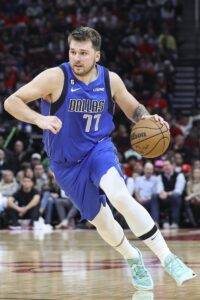 Luka Doncic
Luka Doncic With nearly $144MM in guaranteed money committed to eight players, the Pelicans won’t have cap room this offseason. However, once they lock in low-cost team options and non-guaranteed salaries for players like
With nearly $144MM in guaranteed money committed to eight players, the Pelicans won’t have cap room this offseason. However, once they lock in low-cost team options and non-guaranteed salaries for players like 
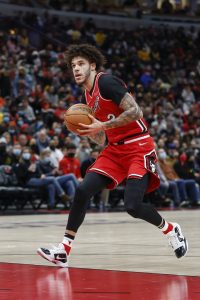 Chicago has a couple great players (LaVine and DeRozan), an All-Defensive First Team guard (Caruso), and some young talent. Still, it feels like the Bulls are stuck in no-man’s land.
Chicago has a couple great players (LaVine and DeRozan), an All-Defensive First Team guard (Caruso), and some young talent. Still, it feels like the Bulls are stuck in no-man’s land.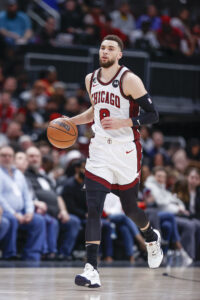

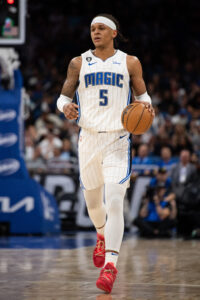
 There were some positive developments —
There were some positive developments — 